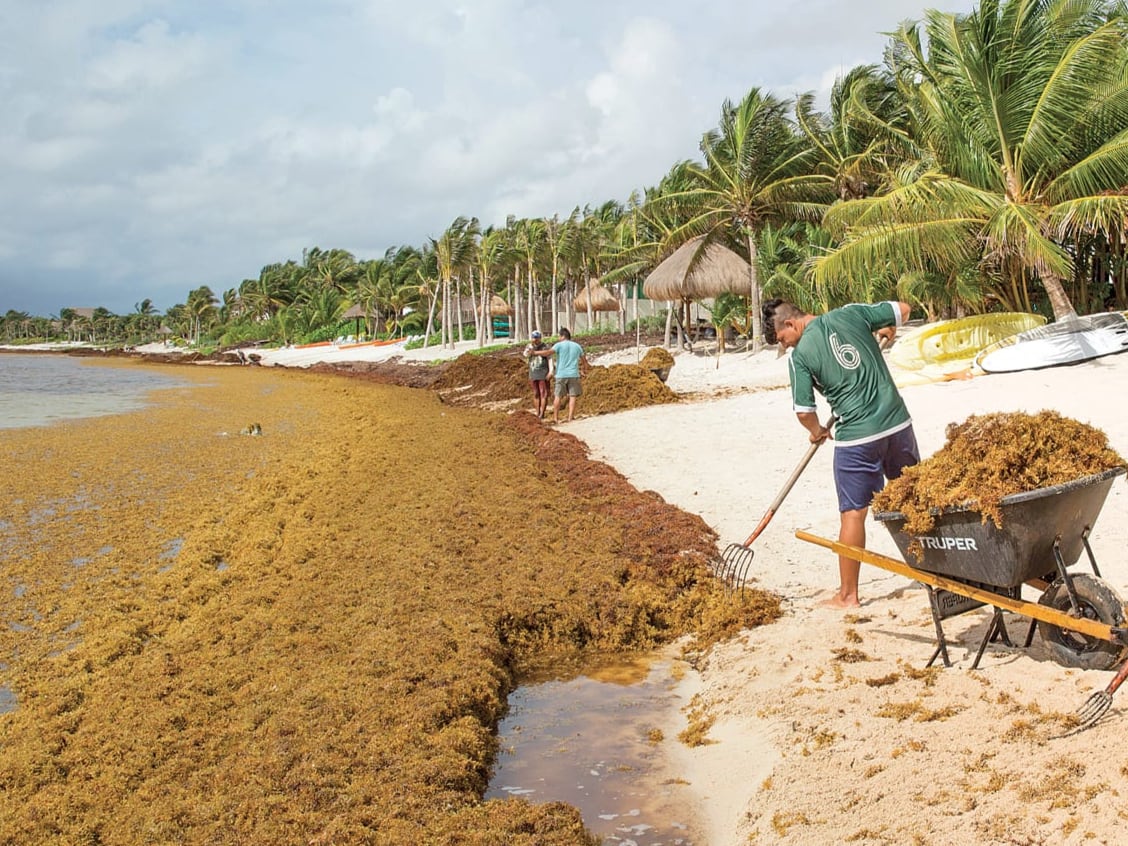What is Sargassum is? Where is it coming from?
Today I was invited by the Intergovernmental Oceanographic Commission (IOC) of UNESCO to attend the 2nd Webinar about Sargassum in the Caribbean and West Africa.
In this online meeting with up to three hundred experts worldwide, we discussed topics like: What is Sargassum? Where is it coming from? What are the consequences of its spread? And many other interesting scientific aspects.
Furthermore, the presenters gave fascinating insights into the utilization of Sargassum. The spectrum of possible applications is comprehensive and ranges from fertilizers to cosmetics and purification solutions. Today, I also learned that studies show that cows fed with Sargassum Seaweed release significantly less methane (very revealing).
Disposal or re-use?
So many different methods and procedures for the disposal or re-use of Sargassum have been presented that I sometimes wonder if there is enough Sargassum for all these solutions.
The main problem seems to me that many of these ideas are capital intensive on the way to realization. But since Sargassum’s seasonal nature means that supplies cannot be guaranteed, a reasonable calculation of costs and profits is difficult to impossible. The silver bullet does not seem to have been found yet.
The most promising solution seems to be one in adapting to the seasonal character of the occurrence of Sargassum bloom.
Unprecedented invasion
“Pelagic Sargassum is a free-floating brown seaweed that blossoms naturally in the warm waters of the Sargasso Sea of the Northern Atlantic Ocean.
The unprecedented recent invasion of Sargassum seaweed on coastal shores in West Africa and the Caribbean Sea is being attributed to factors that include warming of the ocean due to global climate change, discharge of macronutrients (nitrogen and phosphorus forms) from agricultural run-off and wastewater originating from point sources and from major river basins such as the Congo and Amazon Rivers, and the deposition of iron and nutrient-rich Saharan dust on the ocean.
On 26 May 2020, UNEP together with partners IOC-UNESCO and the two Regional Seas under the Cartagena and Abidjan Conventions started a webinar series to highlight key scientific, societal and ecological challenges, responses to prevent impacts and trans-disciplinary and trans-institution collaboration of Sargassum in the context of the Caribbean and West African seas.
The webinar also brought to the forefront efforts by the Group of Experts on the Scientific Aspects of marine Environmental Protection (GESAMP) and its Task Team on Sargassum which has been set up to work with the SCOR-IOC GlobalHAB Scientific Steering Committee towards an Open Science Meeting which is planned to be held in Mexico at a date to be decided. The May 2020 webinar provided an interactive discussion with an online audience (530+ scientists, stakeholders and partners) on Sargassum – key issues and challenges; regional reflections from both the Caribbean and West African perspectives; update on research on Harmful Algal Blooms (HABs); and highlighted challenges, responses and collaboration efforts.” (Press Release)
The second webinar took place today, 21 July 2020 with focus on the scientific knowledge we have and the challenges we face in understanding and assessing Sargassum occurrences.

More than 20 millions tons Sargassum in the Atlantic

Sargassum presence in the timeline


What is in Sargassum?
At the CMU, we are thinking of utilizing our research vessel CMU TAGU in the fight against sargassum, following the path of the initiative of SOS Carbon (Sargassum Ocean Sequestration of Carbon).
Watch the video about this approach.

